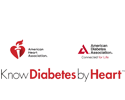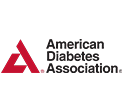Lean as a Vehicle for Change: Transformation of a Behavioral Health Service in Distress
In 2007, the Behavioral Health Services at Kings County Hospital Center in Brooklyn, New York, part of the New York City Health and Hospitals Corporation (HHC), began an extremely challenging multi-year process. A class action lawsuit was brought against the hospital for its treatment of patients and alleged rights abuses. Not long after, the United States Department of Justice (DOJ) began an investigation pursuant to the Civil Rights of Institutionalized Persons Act (CRIPA), finding many violations of these standards and joining the lawsuit with the plaintiffs. In June of 2008, while already under heightened scrutiny, a highly publicized and tragic death occurred in the Comprehensive Psychiatric Emergency Program (CPEP). The response to these challenges required a dramatic transformation of the entire department, with emphasis on the acute care services, but extending across the whole continuum of behavioral health care.
 Kings County Hospital’s Behavioral Health Service (BHS) is a large department within a municipal general care hospital. It includes a CPEP, adult and child inpatient psychiatric units, day treatment, adult and child outpatient mental health clinics, and chemical dependency inpatient and outpatient programs. It employs approximately 1100 staff and serves a population of patients with complex issues, including co-occurring mental health and substance use disorders, co-morbid medical problems, and a myriad of social and economic hardships. Our philosophy of care is based on a patient and family centered, recovery and wellness approach, in which we partner with recipients of care to help them achieve their goals and support successful community re-integration.
Kings County Hospital’s Behavioral Health Service (BHS) is a large department within a municipal general care hospital. It includes a CPEP, adult and child inpatient psychiatric units, day treatment, adult and child outpatient mental health clinics, and chemical dependency inpatient and outpatient programs. It employs approximately 1100 staff and serves a population of patients with complex issues, including co-occurring mental health and substance use disorders, co-morbid medical problems, and a myriad of social and economic hardships. Our philosophy of care is based on a patient and family centered, recovery and wellness approach, in which we partner with recipients of care to help them achieve their goals and support successful community re-integration.
As we embarked on this multi-year journey, recognizing that we would need to tackle the daunting task of transforming BHS, a methodology was required to help manage and guide this multi-faceted improvement process. Negotiations with the DOJ resulted in a Consent Judgment that included 202 provisions in areas as diverse as patient safety, treatment planning, behavior management, and discharge and aftercare. Over approximately a five year period changes would be required in order to reach substantial compliance and demonstrate ability for sustainment.
The Lean approach came to Kings County Hospital as part of an HHC-wide initiative to improve processes in a changing and challenging health care environment. Lean was initially created and implemented at Toyota through the Toyota Production System. This approach to ensuring quality, consistency and financial viability was adopted in manufacturing and, more recently, in healthcare. HHC, the largest municipal health care system in the country, adopted the Lean approach system-wide, bringing on board expert consultants and calling it “Breakthrough.” At BHS, the Lean system provided our vehicle for change, incorporating several key features essential for achieving our goal of reaching substantial compliance with the Consent Judgment and for overall improvements in the quality of care provided. First and foremost, Lean engages people in the process of transformation. Lean brings together line staff and leaders in events which scope out a key area to problem solve, test out, implement and measure the impact of solutions. Critical for achieving meaningful change, Lean is data driven. Outcomes are expected, measured, monitored and countermeasures employed if results are not achieved.
A data infrastructure needed to be built from the ground up. Lean provides the concept of “true north metrics,” which include: Human Development, Quality & Safety, Timeliness/Delivery, Growth/Capacity, and Fiscal. Lean requires a structure, including the formation of steering committees, and utilizes problem solving technology that includes: “A3 Thinking,” Rapid Improvement Events, Value Stream Analyses and Vertical Value Stream Mapping. Many such events brought BHS increasingly closer to achieving the goal (see Merlino, Omi, & Bowen, LEAN BEHAVIORAL HEALTH: The Kings County Hospital Story, for details and examples of these events and the results of these activities across the continuum of care).
Oxford University Press link for Lean Behavioral Health: The Kings County Hospital Story:
The transformation was incremental but monumental. With each additional event, resource re-allocation, data infrastructure development, and continued focus on staff and leadership development; outcomes began to reflect some significant culture change. Restrictive interventions (i.e. restraint and stat IM medication usage) decreased, behavioral interventions (i.e. individual behavior plans) increased, incidents decreased, new and innovative initiatives were designed and implemented, revenue increased, and, eventually, the improvements in several areas were acknowledgement and recognized as model programming. As we continue on this journey and approach the achievement of substantial compliance, the lessons learned continue to inform our decision-making, proving critical in a challenging and evolving healthcare environment. These Lean approaches have become part of the fabric of our everyday operation and help to ensure that we continue to provide high quality care for those we serve in a fiscally viable manner. As a continuous improvement process, we are interested in the experiences and lessons learned by others using Lean. What have been your experiences with the Lean system? What were your outcomes?
To continue the conversation, please feel free to contact: [email protected]


















